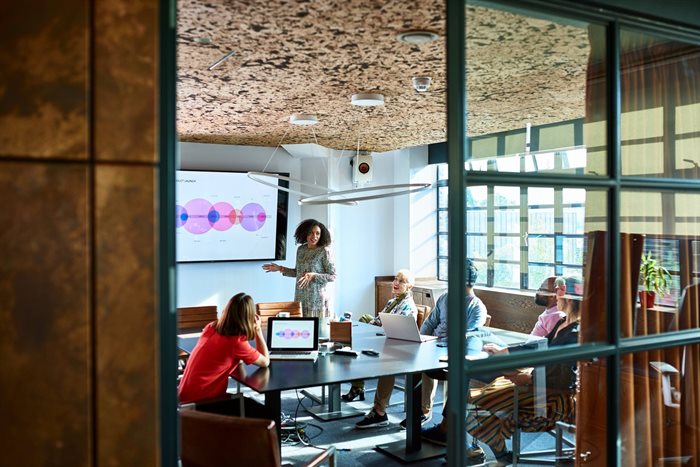
"The Covid pandemic has definitely redefined what constitutes healthy work spaces, employee safety and the wellbeing of our employees," he said, "and any leaders who are serious about the wellbeing of their staff, understand the importance of getting this market right."
Also part of the 'Future office - reimagining the commercial office space' parallel hybrid session at the conference was Martin Smith, design director and expertise leader at Zutari, who unpacked how their clients are prioritising healthy offices.
While green building and building health rating tools have been available for a quite a while now, the arrival of Covid-19 revealed a gap in the design system, he said. Called on to assess some of its clients' buildings for health safety during the height of the pandemic, Zutari realised that there were actually no tools available to rate buildings for infection control. Together with GBCSA, Zutari then developed the free “safe return to the workplace” guideline, a technical guide for existing buildings that identifies best practice recommendations for a healthy and safe return to the office.
While clients are taking on some of the short and medium-term interventions, according to Smith, few are designing for full infection control and wellbeing due to the uncertainty around Covid-19 and the economy, the future of the office, and an inability to assess the risk. In order for it to get greater focus, he believes a proper rating tool needs to be introduced or an additional health and infection control category be added to an existing tool.
Lauren Thompson, dealer business manager at Steelcase, also speaking at the conference, looked at the hybrid way of working that is being adopted on a large scale globally, which she described as a highly complex, fluid situation as no one size fits all.
"What we do know is that it’s really important to get people back to the office so that they can reconnect with their colleagues, reconnect with their organisation, and also have access to their leaders so that we can start to re-establish that social capital," she said.
Now is the time to experiment, Thompson noted, and it's important to include employees as part of the process so that they can understand the organisation's motivations and methods and its expectations. "We can then learn what works and what doesn't work, but then we need to be prepared to pivot as we learn and this is going to require a lot more flexible spaces going forward."
Hassan Shaikh, executive director and principal workplace strategist at Revolve, looked at some of the key components of the future workplace strategy. He said that the focus has to be on a human-centric approach with wellbeing as the fundamental consideration.
When it comes to people returning to the office, we need to ensure that it is safe and that people have a choice if they want to return or not, he said. "By doing this, we will need to start creating change processes that support the return and create a level of comfort for people so that there is no uncertainty."
In terms of space, when considering a hybrid system, organisations will need to look at what levels of hybridity they are applying from a safety perspective, and how those changes will affect the real estate strategy and the workplace strategy, he said.
"The workplace strategy needs to be informed by benchmarking and collecting data to fully understand what styles of working fit into the business... and how to refine that with positive employee involvement processes to ensure successful implementation."
From a developer's perspective, Giles Pendleton, chief development officer at Attacq Limited, put any fears of the death of the office to bed, saying that his organisation is busier now than it was two years ago from enquiries for new builds. It’s the same tenants, he noted, who are now being more prescriptive around their needs.
Greater emphasis is now is placed on where a building sits in an ecosystem. "Tenants are now interested in where's the nearest coffee shop, where's the nearest kindergarten, where's the nearest petrol station, how do I walk from A to B, am I safe, what does that visual look like, how engaging is that path of discovery," he explained.
While in terms of the inside of buildings, corporates want to know what data a building can produce: "There's this migrational flight to quality, flight to efficiency, flight to sustainability and flight to safety. Corporates are making decisions at high rentals to give their staff those benefits, so the data is important," he said.
"The menu, from a developer’s perspective, has to be there to give your tenants what they want, but [the office] is definitely not going away."
